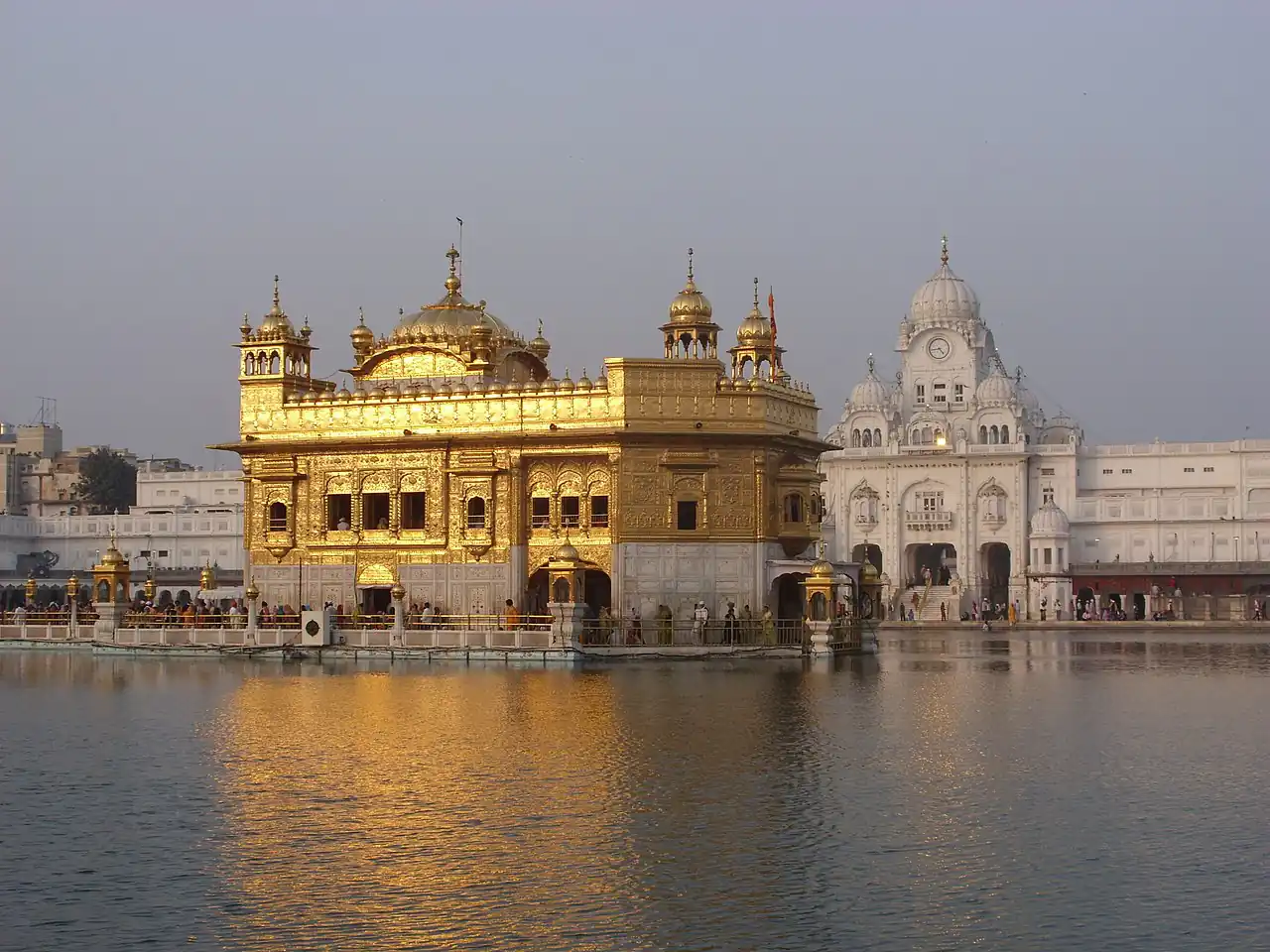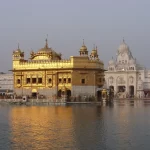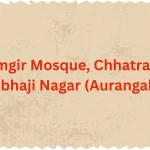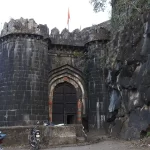Amritsar: History, Spirituality, and Cultural Delights
Ready to experience the soul of Punjab? Start planning your trip to Amritsar today!
🔴 Introduction: The Soul of Punjab
“Where Spirituality Meets History, and Every Street Tells a Story”.
Amritsar, the vibrant cultural and spiritual nucleus of Punjab, is a city that pulses with devotion, resilience, and warmth. Known globally for the iconic Golden Temple (Harmandir Sahib), this city is far more than a pilgrimage site—it’s a living tapestry of history, architecture, and Punjabi zest. From the echoes of the Jallianwala Bagh massacre to the aroma of Kulchas sizzling in street stalls, Amritsar offers an immersive journey through time and tradition.
🟢 Detailed Section Breakdown:
🔘 The Spiritual Epicenter of Sikhism
Amritsar, the “Pool of Nectar”, is the spiritual heartbeat of Sikhism, home to the Golden Temple (Harmandir Sahib). This iconic shrine isn’t just a place of worship—it’s a living testament to equality and community. The temple’s golden façade reflects in the sacred Amrit Sarovar, where pilgrims from every corner of the globe bathe to seek solace. Founded in 1577 by Guru Ram Das, the city was envisioned as a sanctuary of peace, and today, over 100,000 visitors daily partake in the langar (community kitchen), where meals are served regardless of caste or creed.
➤ Local Insight:
“The Golden Temple isn’t just a monument; it’s the soul of Punjab. When you sit by the Sarovar at dawn, you feel the divine in the silence”. – Bhai Rajinder Singh, Head Granthi, Golden Temple.
🔘 A Historical Crucible: From Valmiki’s Ashram to Colonial Struggles
Long before Sikhism, Amritsar was linked to the Ramayana. The Ramtirath Temple, 12 km west of the city, marks the hermitage of Maharishi Valmiki, where Sita is believed to have given birth to Lava and Kusha. Fast-forward to the 16th century: Guru Ram Das transformed the region into Ramdaspur, laying the foundation of modern Amritsar. The city witnessed brutal invasions by Ahmad Shah Durrani in the 18th century and became a flashpoint during British rule, epitomised by the Jallianwala Bagh massacre (1919)—a tragedy that ignited India’s independence movement.
🔘 Architectural Splendors: Blending Sikh, Mughal, and Colonial Styles
Amritsar’s architecture is a visual symphony. The Golden Temple combines Islamic domes with Hindu floral motifs, while the Durgiana Temple mirrors its design for Hindu devotees. The Gobindgarh Fort, a 18th-century sandstone marvel, showcases Punjab’s martial history with sound-and-light shows. Don’t miss the 12 historic gates of the walled city, like the ornate Lahori Gate and the bullet-scarred Sultanwind Gate, each narrating tales of resilience.
🔘 Culinary Heaven: From Sizzling Streets to Royal Kitchens
Amritsar’s food is an ode to Punjabi indulgence. Start with Amritsari Kulcha at Kulcha Land—flaky bread stuffed with spiced potatoes, served with tangy chole. Dive into Fish fry at Makhan Fish & Chicken Corner or creamy lassi at Gian di Lassi. For a royal treat, Bharawan da Dhaba serves Dal Makhani simmered for hours. The city’s food isn’t just a meal; it’s a heritage passed through generations.
➤ Foodie Secret:
“The secret to our kulchas? The dough is fermented overnight, and the tawa is seasoned with decades of flavour”. – Surjit Singh, Third-Generation Owner, Pehelwan Kulche Wala.
🔘 Markets & Handicrafts: Where Tradition Meets Commerce
Amritsar’s bazaars are a sensory overload. Hall Bazaar dazzles with Phulkari embroidery, Punjabi juttis, and brassware. At Katra Jaimal Singh, hunt for pashmina shawls and silver jewellery. The Guru Bazaar is a treasure trove for Sikh artefacts, including miniature Guru Granth Sahibs. For UNESCO-recognised craftsmanship, visit Jandiala Guru’s Thathera Mohalla, where artisans hand-beat brass utensils using 500-year-old techniques.
🔘 Festivals: When the City Dances to Divine Rhythms
During Baisakhi (April), Amritsar erupts in joy with Nagar Kirtan processions and bhangra performances. Gurpurabs (Sikh Guru anniversaries) see the Golden Temple illuminated with 100,000 lamps. In October, Diwali transforms the city into a glittering spectacle, celebrated uniquely here as Bandi Chhor Divas, marking Guru Hargobind’s release from Mughal imprisonment.
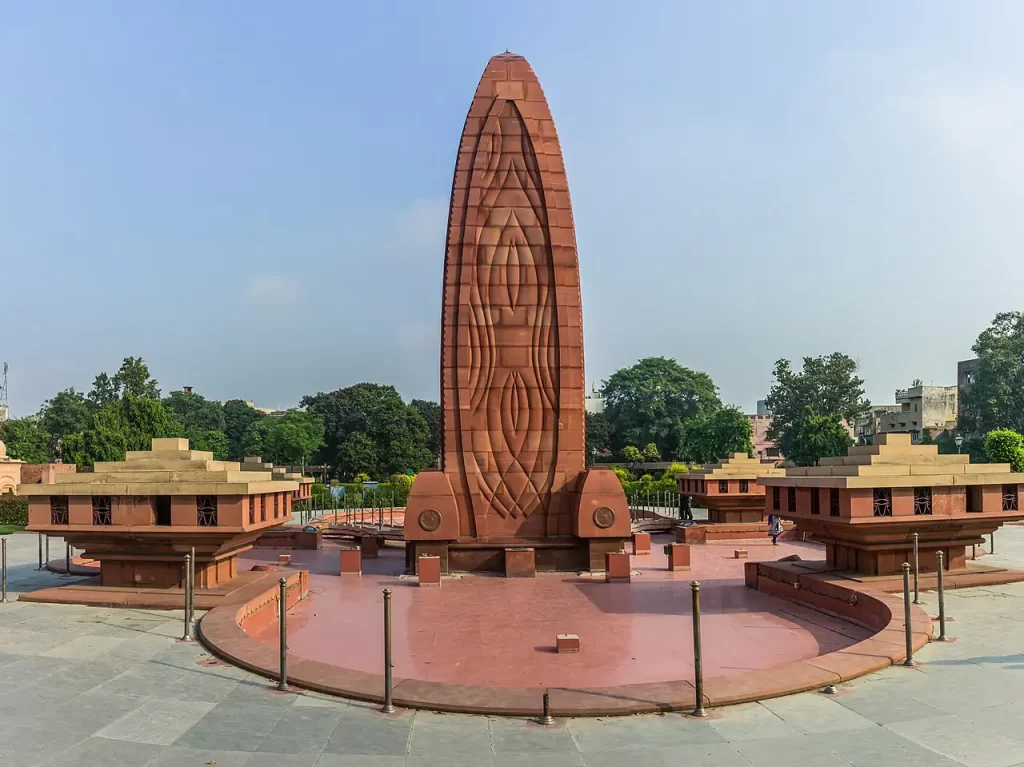
🔘 The Resilient Spirit: Jallianwala Bagh and Beyond
The Jallianwala Bagh memorial is a haunting reminder of colonial brutality. Bullet marks on walls and the Martyrs’ Well, where hundreds jumped to escape gunfire, evoke visceral emotions. Nearby, the Partition Museum chronicles the heart-wrenching stories of 1947, with artefacts like refugee trunks and letters.
➤ Visitor Reflection:
“Standing at Jallianwala Bagh, you don’t just see history—you feel it in your bones.” – Dr. Priya Mehta, Historian.
Also Read
Alamgir Mosque, Chhatrapati Sambhaji Nagar – Aurangabad
🔘 The Wagah Border: Patriotism Meets Theatricality
Just 28 km from Amritsar, the Wagah Border hosts a daily flag-lowering ceremony. Soldiers from India and Pakistan engage in high-kicking marches, drawing roars from crowds. Arrive early to snag front-row seats and soak in the electric atmosphere of patriotic chants and Bollywood beats.
🔘 Rural Charms: Villages and Heritage Trails
Escape the city bustle with a day trip to Harike Wetlands, a birdwatcher’s paradise hosting migratory Siberian cranes. Or explore Pattar Ki Haveli in nearby Dera Baba Nanak, a 19th-century mansion with frescoed walls. For a spiritual retreat, visit Baba Bakala, 40 km away, where Guru Tegh Bahadur was proclaimed the ninth Sikh Guru.
🔘 Climate & Travel Seasons: When to Visit
⦿ Winter (October–March): Crisp mornings (5°C) perfect for temple-hopping.
⦿ Summer (April–June): Scorching but ideal for evening walks at Gobindgarh Fort.
⦿ Monsoon (July–September): Lush landscapes; attend the Teeyan Festival celebrating Punjabi womanhood with folk dances.
🔘 The Amritsar of Today: Urban Growth and Cultural Preservation
Amritsar is a city of contrasts. While malls like Alpha One cater to modern shoppers, neighbourhoods like Guru Bazaar retain their old-world charm. The Amritsar MetroBus connects heritage sites, and the upcoming Delhi-Amritsar-Katra Expressway will slash travel times. Yet, the city’s soul remains rooted in its Gurdwaras, Dhabas, and Peepal trees shading elderly storytellers.
🔘 Demographics: A Mosaic of Faiths and Traditions
Amritsar’s 1.1 million residents are a blend of Sikhs (48%), Hindus (49%), and portion of Christian and Muslim communities. The Majha dialect of Punjabi dominates, sprinkled with Urdu and Hindi. The district’s six tehsils (Ajnala, Amritsar-I, Amritsar-II, Baba Bakala, Tarn Taran, and Patti) each have unique cultural flavours — from Ajnala’s Sufi shrines to Baba Bakala’s Sikh pilgrimage sites.
🔘 The Artistic Legacy: Music, Dance, and Literature
Amritsar has nurtured legends like Bhai Vir Singh, the “Father of Modern Punjabi Literature”, and Lala Lajpat Rai, the freedom fighter. The Sangeet Sammelan festival celebrates classical music, while street performers at Company Bagh keep alive folk traditions like Giddha and Tumbi.
🔘 Sustainable Tourism: Preserving Heritage, Empowering Locals
Under the HRIDAY Scheme, Amritsar’s heritage structures are being restored. Community initiatives like Project Virasat train youth in traditional crafts, while eco-friendly home-stays in villages like Chheharta offer immersive rural experiences.
🔘 Why Amritsar Stays With You
Amritsar isn’t just a destination—it’s an emotion. It’s in the elderly priest who blesses you with a smile at the Golden Temple, the farmer who shares stories over a hookah in his field, and the artisan whose hands mould history into brass. This city doesn’t let you go; it becomes a part of you.
✡In this guide, we’ll unravel Amritsar’s layered history, marvel at its architectural wonders, and dive into its culinary and cultural treasures. Whether you’re a history buff, a foodie, or a spiritual seeker, Amritsar promises an unforgettable experience.
🟣 Section Breakdown:
⦿ History of Amritsar: From Ramdaspur to Modern Metropolis
⦿ Architectural Marvels: Golden Temple, Jallianwala Bagh & More
⦿ How to Reach Amritsar: Distances from Major Indian Cities
⦿ Best Time to Visit & Climate Guide
⦿ Top Attractions: Temples, Markets, and Heritage Sites
⦿ Cultural Deep Dive: Food, Handicrafts, and Local Lifestyle
⦿ Travel Tips & Itineraries: Monsoon Magic and Festive Seasons
⦿ Demographics, Economy, and Notable Personalities
⦿ FAQs: Your Questions Answered
⦿ Conclusion & Sources
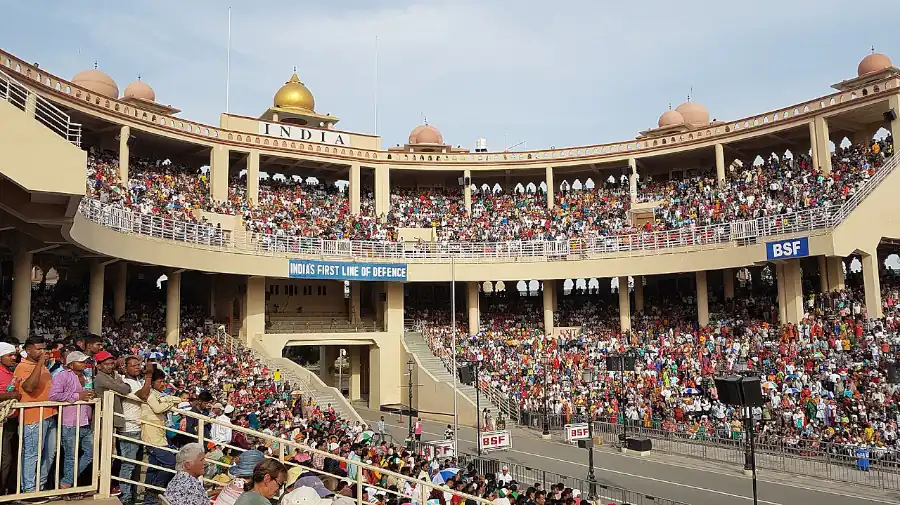
Amritsar, Punjab: A Spiritual, Historical, and Cultural Odyssey
“Where Every Cobblestone Whispers Tales of Valour, Faith, and Unyielding Punjabi Spirit”.
🟠 Detailed Section Breakdown:
⭕ History of Amritsar: From Ramdaspur to Modern Metropolis
Amritsar’s origins trace back to 1577 when Guru Ram Das, the fourth Sikh Guru, founded the city as Ramdaspur. The sacred Amrit Sarovar (Pool of Nectar) was excavated here, giving the city its current name. Under Guru Arjan Dev, the Golden Temple was constructed, embedding Sikhism’s spiritual roots.
➤ Key Historical Milestones:
⦿ 1604: Installation of the Guru Granth Sahib in the Golden Temple.
⦿ 1762–1767: Afghan invader Ahmad Shah Durrani ransacked the city.
⦿ 1849: Annexation by the British, leading to infrastructure modernisation.
⦿ 1919: Jallianwala Bagh massacre, a turning point in India’s freedom struggle.
⦿ 1984: Operation Blue Star, a controversial military action at the Golden Temple.
➤ Architectural Evolution:
The city’s layout reflects Sikh and Mughal influences. The 12 historic gates (e.g., Lahori Gate, Sultanwind Gate) of the walled city, built during Maharaja Ranjit Singh’s reign, symbolise its fortified past. The British later added Hall Gate, blending colonial and local styles.
➤ Local Insight: “Amritsar’s streets are like pages from a history book. Every corner has witnessed sacrifice and celebration”. – Harpreet Singh, Heritage Guide.
⭕ Architectural Marvels: Where Faith Meets Grandeur
➤ Golden Temple (Harmandir Sahib)
⦿ Design: A blend of Hindu and Islamic styles, with gold-plated domes and marble inlay.
⦿ Significance: The Adi Granth (Sikh scripture) is enshrined here.
⦿ Visitor Tip: Attend the nightly Palki Sahib ceremony.
➤ Jallianwala Bagh
⦿ Memorial: Marks the 1919 massacre; bullet marks and the Martyrs’ Well are haunting reminders.
⦿ Architecture: A tranquil garden contrasting its tragic past.
➤ Durgiana Temple
⦿ Style: Mimics the Golden Temple, dedicated to Goddess Durga.
➤ Hidden Gem: Ramtirath Temple, believed to be the hermitage of Maharishi Valmiki (author of Ramayana).
⭕ How to Reach Amritsar: Distances from Major Cities
| City | Distance (km) | Travel Time (Approx.) |
| Lahore (Pakistan) | 47 km | 1.5 hours (via Attari) |
| Chandigarh | 217 km | 4 hours |
| New Delhi | 455 km | 8 hours by road |
| Jaipur | 660 km | 11 hours |
| Mumbai | 1658 km | 24 – 28 hours (by train) |
Note: Distance and travel time may vary. Please check with google maps or local authorities before travelling.
➤ Travel Options:
⦿ Air: Sri Guru Ram Das Ji International Airport (flights from Dubai, London, Delhi).
⦿ Rail: Amritsar Junction (connected to Delhi, Mumbai, Kolkata).
⦿ Road: Grand Trunk Road (NH3) offers scenic drives.

⭕ Best Time to Visit & Climate Guide
⦿ October–March: Pleasant (10°C – 25°C), ideal for sightseeing.
⦿ April–June: Hot (up to 45°C), but fewer crowds.
⦿ July–September: Monsoon (lush landscapes, 70% humidity).
➤ Monsoon Itinerary:
⦿ Day 1: Golden Temple in rain-reflected serenity.
⦿ Day 2: Explore Partition Museum and local markets.
⦿ Day 3: Day trip to Attari Sham Singh Railway Station & Wagah Border for monsoon parade.
⭕ Top Attractions: Beyond the Golden Temple
➤ Cultural Hotspots
⦿ Wagah Border: Daily flag-lowering ceremony.
⦿ Partition Museum: Chronicles India’s 1947 divide.
⦿ Gobindgarh Fort: 18th-century fort with light shows.
➤ Markets & Food
⦿ Hall Bazaar: Shop for Phulkari Dupattas and Juttis.
⦿ Kesar Da Dhaba: Relish Dal Makhani and Karahi Paneer.
➤ Local Secret: “Try Amritsari Kulcha at Bhai Kulwant Singh Kulchian Wale—it’s life-changing!” – Ritu Sharma, Food Blogger.
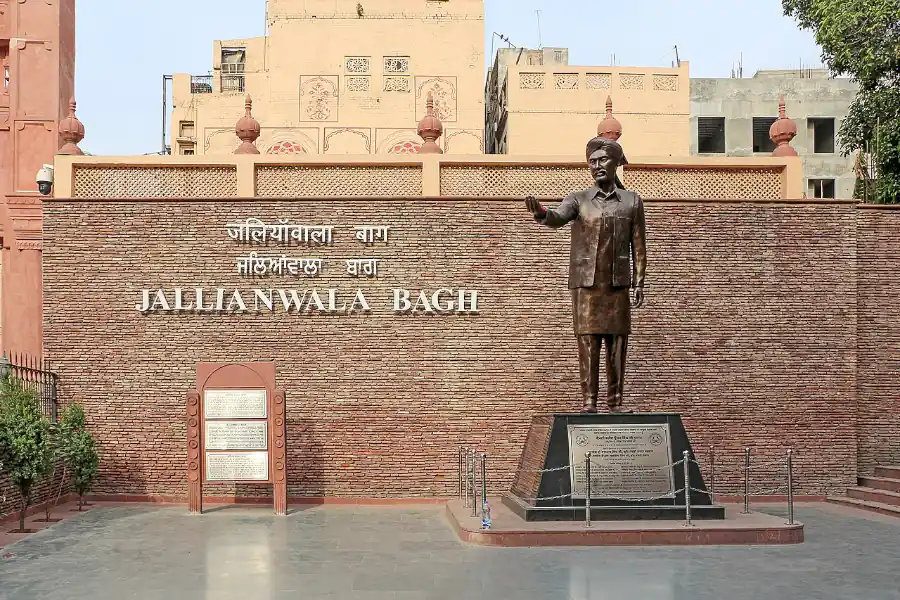
🟤 Expanded “Things to Do” in Amritsar: Granular Details
✅︎ Spiritual Immersion
❉ Golden Temple Night Ceremony: Attend the Palki Sahib ritual at 9:30 PM, where the Guru Granth Sahib is carried to its resting place in a gold-plated palanquin.
❉ Japji Sahib Recital: Join the 4:30 AM morning prayer for a transcendent experience.
✅︎ Historical Deep Dives
❉ Gobindgarh Fort’s Toshakhana: Explore the 18th-century armoury with guided tours (₹200 entry).
❉ Khalsa College Museum: Discover rare Sikh manuscripts and Maharaja Ranjit Singh’s weaponry.
✅︎ Culinary Adventures
❉ Kesar Da Dhaba (1916): Try the Kadhi Pakora and Gur ka Halwa in vintage brass utensils.
❉ Street Food Crawl: From Gur ka Paratha at Gurudas Ram Jalebi Wala to Chaat at Brijwasi Sweets.
✅︎ Offbeat Trails
❉ Pul Kanjari: A 45-km drive to this Mughal-era rest house with a step-well and temple.
❉ Tarn Taran Sahib: Visit the largest Sarovar (Holy Tank) in Sikhism, 25 km south.
✅︎ Monsoon Magic
❉ Rainy Day at Rambagh Garden: Stroll under century-old trees with a steaming cup of Kahwa.
❉ Heritage Walk in Walled City: Navigate rain-slicked alleys to find hidden Havelis and Sikh-era wells.
✅︎ Shopping Deep Cuts
❉ Ghee Markets: Buy homemade Desi Ghee from shops near Town Hall.
❉ Book Hunting: Rare Punjabi poetry books at Bhai Chattar Singh Jiwan Singh Booksellers.
✅︎ Cultural Workshops
❉ Phulkari Embroidery Class: Learn from artisans at the Punjab Arts Council (3-hour session, ₹500).
❉ Turban Tying: Master the art of Dastar Bandi at the Golden Temple’s Sikh Heritage Centre.
⭕ Cultural Deep Dive: The Heartbeat of Punjab
➤ Handicrafts:
⦿ Thatchers: UNESCO-recognised brass artisans in Jandiala Guru.
⦿ Pashmina Shawls: Shop at Cloth Market near Town Hall.
➤ Festivals:
⦿ Baisakhi (April): Harvest festival with Nagar Kirtan processions.
⦿ Gurpurab: Golden Temple illuminated for Guru Nanak’s birthday.
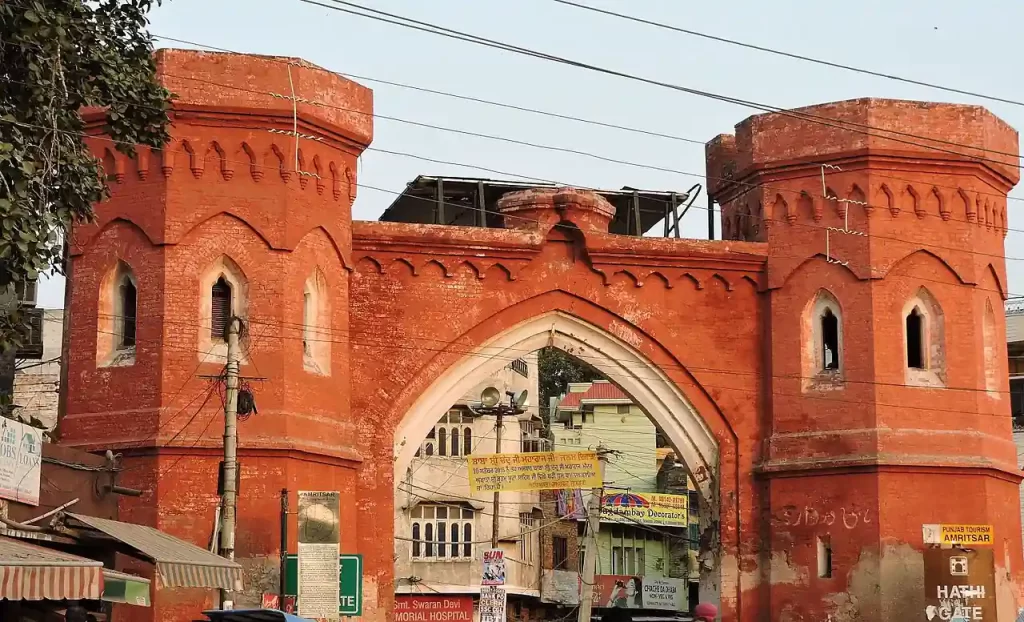
⭕ Travel Tips & Itineraries
⦿ Safety: Safe for solo travellers; avoid political discussions.
⦿ Transport: Use auto-rickshaws or cycle rickshaws for short distances.
➤ 5-Day Itinerary:
⦿ Days 1–2: Heritage sites (Golden Temple, Jallianwala Bagh).
⦿ Day 3: Food trail and shopping.
⦿ Day 4: Day trip to Attari-Wagah.
⦿ Day 5: Rural Punjab experience (villages near Amritsar).
⭕ Demographics, Economy & Notable People
⦿ Population: 1.1 million (2011); Sikhs (48%), Hindus (49%).
⦿ Economy: Tourism, textiles, handicrafts.
⦿ Talukas: Ajnala, Amritsar-I, Amritsar-II, Baba Bakala.
➤ Notable Personalities:
⦿ Bhai Vir Singh (Punjabi Poet).
⦿ Lala Lajpat Rai (Freedom Fighter).
🟡 FAQs
Is Amritsar safe for solo female travellers?
Yes, but dress modestly near religious sites.
What’s the best way to explore Amritsar?
Hire a local guide for historical insights.
Can I visit Lahore from Amritsar?
Yes, via the Attari-Wagah border (visa required).
🔵 Conclusion: Embrace the Spirit of Amritsar
Amritsar is not just a destination—it’s an emotion. From the serenity of the Golden Temple to the fervour of its festivals, this city invites you to witness Punjab’s soul. Whether you’re tracing history at Jallianwala Bagh or savouring Ghee-laden Parathas, every moment here is a story waiting to unfold.
⚫ Sources:
🎯 Wikipedia: Amritsar
🎯 Interviews with local guides and historians.
Image Credit
🎯 Wikimedia Commons – Amritsar Golden Temple 3
🎯 Wikimedia Commons – Lahauri Gate , Amritsar, Punjab, India
🎯 Wikimedia Commons – Golden Temple, Amritsar, Punjab India
🎯 Wikimedia Commons – Jallianwala Bagh
🎯 Wikimedia Commons – Jallianwala Bagh, Amritsar 01
🎯 Wikimedia Commons – Indian Wagah Attari border arena – Wagah – Punjab
For more information, you can visit our website: ExploreXP
Ready to walk the lanes of history? Book your Amritsar adventure today and let Punjab’s warmth embrace you!
- Arrah, Bihar: A Comprehensive Travel and Cultural Guide
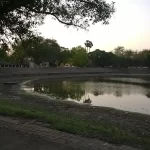
- Aranya Devi Temple – Arrah, Bihar: Where Mythology Meets Modern Devotion

- Anjaneri Hill – Nashik, Maharashtra: Where Myth Meets Majesty
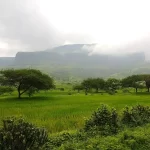
- Anand Sagar, Shegaon, Maharashtra – A Spiritual Oasis Blending Serenity & Adventure
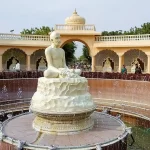
- Aga Khan Palace – Pune’s Monument of Freedom and Legacy
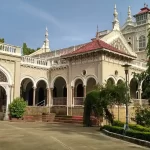
- Attari Sham Singh Railway Station – A Historic Gateway to Punjab’s Heritage

